What Programming Language to Choose?

Many people are curious about the code. Unfortunately, choosing a programming language can be a major hurdle because people lack the information they need to make a good decision. That’s why you should not start with a coding language.
Once you consider what you want to study, build and accomplish, you can begin to think about which language to learn. There are always options, and there will still be confusion. However, languages have strengths and weaknesses. Certain languages have been adopted more regularly in specific fields so, by choosing a project or objective, the field of options is drastically reduced.
To put it simply, if you know the destination in advance, you will be working correctly from the beginning.
Someone will tell you to learn JavaScript first, then someone will tell you that the Python syntax is simpler, so you should start with Python. Then you will hear about Java and all available jobs and etc etc etc.
So, what to do? You can further refine your goal. Perhaps these points to consider will help you:
• Work and future perspectives
• Technology that interests you
• Difficulty level
• Resources available to you
• Adaptability
Another smart tip is to find a mentor or someone who knows and that in one way or another is a “sen sei” of the subject.
Our final recommendation, do not get overwhelmed. Go one step at a time. However, do not dwell on learning just one thing, as the market and global evolution are becoming more versatile and open to mutability. In the end the language you learn really does not matter as much as you might think, because many programming languages, at its core, are very similar.
Part of learning the code is learning the syntax of a language (its grammatical or structural rules). A big part of learning to code, and perhaps the one that takes more time and gives more headaches, is learning how to solve problems as a programmer. However, at its core, all programming languages share more than they might suspect. Almost all programming languages will have:
• Basic constructions for the branch
• Basic Loop Constructions
• Calling methods or procedures
• A way to organize the code at a high level
Many programming languages are so similar that, if you know one you almost already know the other. C # and Java are pretty good examples. JavaScript is very similar to both.
Learning the first programming language is always the hardest, but once you learn to learn a language, learning a second language is easier. After knowing two or more programming languages, each additional programming language is exponentially easier to learn.
Then find some information that may be of interest to you for this topic of analysis:
Dynamic languages
They are generally easier for beginners because they are flexible and fun. You can quickly build an application from scratch with fewer lines of code, and there is a hard rule on how to write things to make them behave the way you want them to. As dynamic languages are often very high-level languages, I would spend less time trying to get the right details and more time learning programming concepts, which is another reason why dynamic languages are popular among beginners, who are motivated by Be able to build things and see results quickly.
• JavaScript:
Not to be confused with Java, JavaScript is primarily a client scripting language used for front-end development. JavaScript is compatible with all browsers and is used to create interactive web applications, often through libraries such as jQuery and front-end frameworks like AngularJS, Ember.js, React and can be used as a server language through the Platform Node.js. You can also create hybrid mobile applications with JavaScript by using frames as the phone, while Facebook React Native allows you to create native mobile applications with JavaScript.
However, JavaScript is also known as a difficult language because it is not typed and, therefore, is difficult to debug. Statically typed versions, such as Microsoft TypeScript or JSX, are used by React.
• Ruby:
It was developed so that developers can have fun and be productive at the same time. Ruby was made popular by the Ruby on Rails framework, a full-stack web framework optimized for happiness programming. Because Ruby reads like English and Rails has tools that facilitate common out-of-the-box development tasks, many would recommend learning Ruby as their first programming language.
Ruby is mainly used for back-end development, and sites such as Airbnb, Shopify, Bloomberg, Hulu, Slideshare (to name a few), were built with Ruby on Rails.
• Python
is another highly recommended language for beginners, and is the most popular introductory language in US universities. Developers have used Python to create desktop applications and web applications alike, and it has excellent tools for data mining. In addition, Python is particularly popular in academic communities for scientific computing, data analysis, and bioinformatics. Google, Dropbox, Pinterest, Instagram, Reddit, BitTorrent, Civilization IV, and more were built with Python. Of server-side scripts and is usually considered as a beginner. It’s easy to conceptualize what PHP code will do, which makes it easy to pick up. Most websites have been built with PHP because the language is very specialized for the web.Facebook, Wikipedia, Yahoo !, Tumblr, WordPress, and more were built with PHP. Statically Mechanized Languages Applications built with static type languages Are known to be more scalable, stable and maintainable. Static languages are often stricter in catching errors through type checking, and more code is needed to build a prototype. Game engines, mobile applications and enterprise-level back-ends are often built with static-writing languages. Java: As a general-purpose language, Java is used to create Android applications, desktop applications, and games. Java is also commonly used as a server language for enterprise-level back-end development. In addition, Hadoop is a popular Java-based framework that is used to store and process large data, and is implemented by companies such as Yahoo, Facebook And Amazon Web Services
• C:
is often used to program system software and is the lingua franca of operating systems. C has influenced almost all recent programming languages, especially in Objective-C and C ++. So, if you know C well, it would probably be easier for you to pick up other popular languages. C takes the more complex code to perform simple tasks, beginners may find it difficult to stay motivated if this is their first language. However, knowledge of C will certainly help you as a programmer in the long run.
• C-Target / Swift (for iOS development):
it is a layer built on top of C language, which makes it static. That said, it can also be used for dynamic writing. Apple Swift is a static language designed to be compatible with Objective-C, but its static type makes it more resistant to errors. Swift is designed to encode beginners to easily pick it up and is aimed at correcting some of the Objective-C problems.
• C ++: is a powerful C-based language. It is designed to program systems, But it has also been used to create games / game engines, desktop applications, mobile applications and web applications. C ++ is powerful and fast, even Facebook has developed several components of high performance and high reliability with it. Many softwares have been built with C ++, including Adobe Systems, Amazon, Paypal, Chrome and more. Like C, C ++ is generally considered more difficult for beginners to learn on their own. So, if you decide to learn C ++ as your first programming language, do not hesitate to find a mentor through Meetups or find a C ++ Codementor.
• C # (“C Sharp”):
is developed to be used For the Microsoft .NET Framework, which runs primarily on Microsoft Windows. C # is used for web development, game development and general development of Microsoft. Recently, you can also use C # to create native mobile applications for iOS and Android through Xamarin.
• SQL (“Sequel”):
or Structured Query Language, is a query language used to communicate with databases. Although SQL can not be used to create applications, it is used to manage data in applications that use relational database management systems (RDMS).
If you would like to know our courses or want to have more information about it, contact us at +1 (877) 256-7414 or send an email to [email protected].
